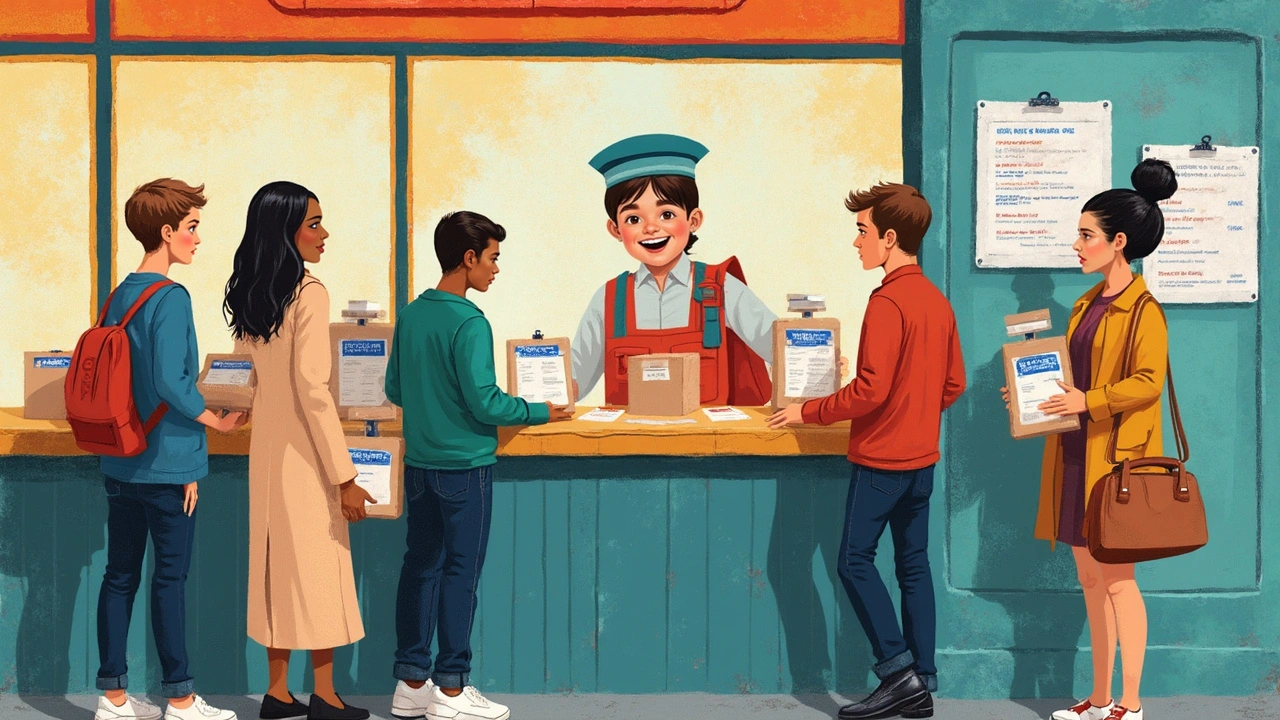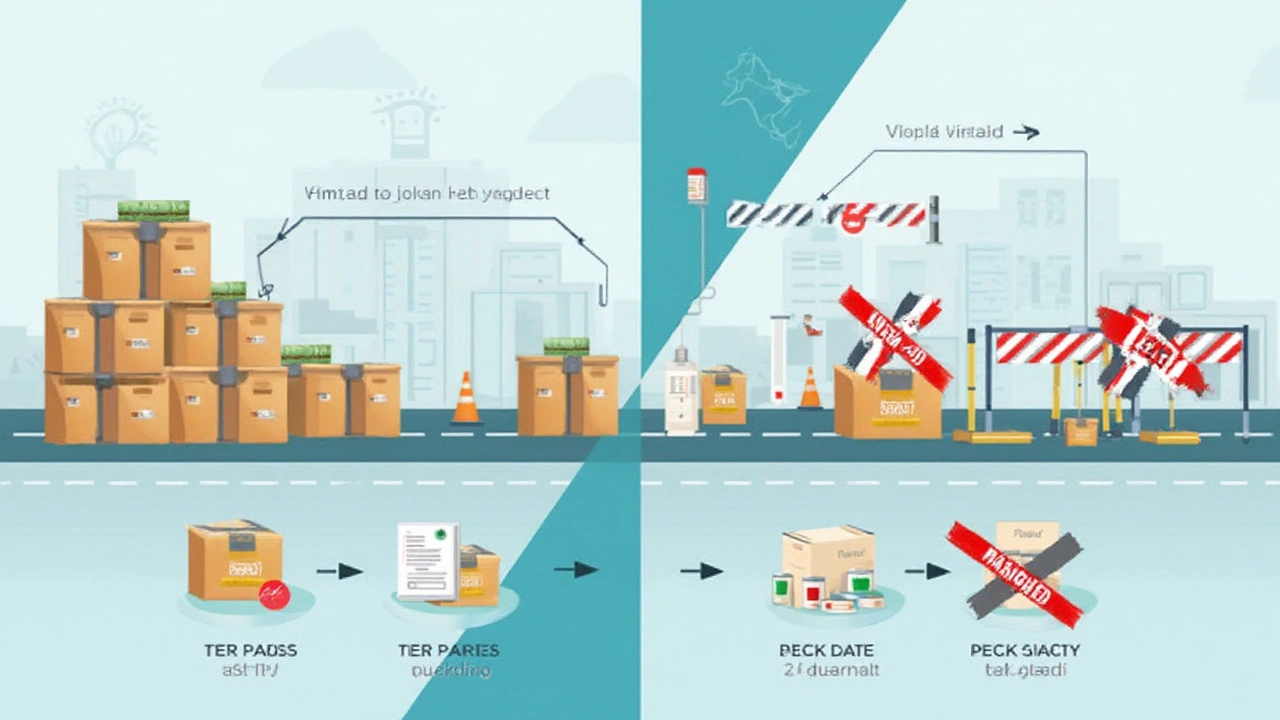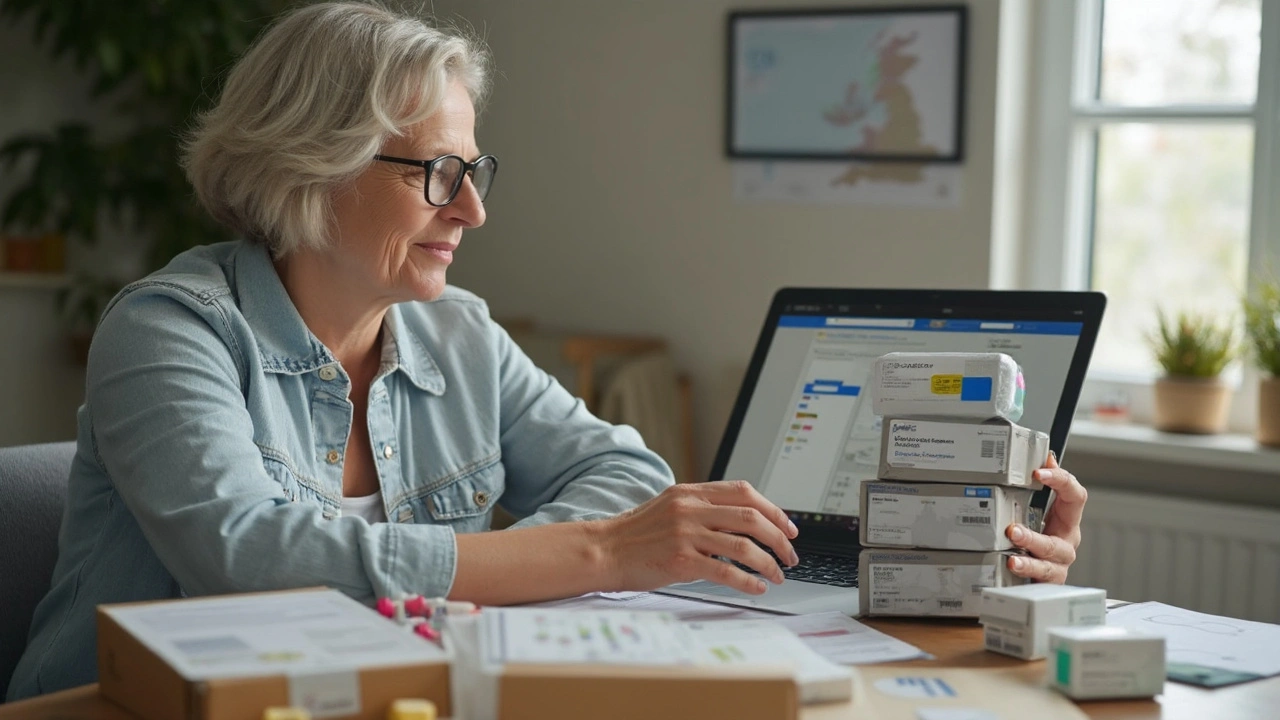Why People Import Prescription Drugs in 2025
Let’s get real here. Buying prescription meds overseas isn’t just about saving a few bucks—it’s about making sure you get the right treatment when the local pharmacy comes up short or insurance plays gatekeeper. The prices at home have shot up so much in recent years that more people are looking past their borders for affordable, trusted medication. By 2025, this isn’t some fringe thing. According to a survey published last November, nearly 18% of adults in the U.S. had tried ordering prescription drugs online at least once. Most of them weren’t just looking for obscure treatments—think insulin, inhalers, and cholesterol meds.
The internet is flooded with sites promising easy access, but many people get tripped up when their order lands in customs. Maybe you got a warning letter, or your parcel was seized because of a technicality. Suddenly, the anxiety creeps in, and you start to wonder: am I even doing this legally? The first step is knowing the actual rules—and believe me, most people get them wrong because they’re hidden deep inside boring government PDFs. So, here’s everything you need to get clear on what you can and can’t import, and how to keep what’s rightfully yours from ending up in some government warehouse.
But before we move on—did you know the U.S. FDA technically doesn’t allow the import of prescription meds for personal use? Then why do thousands still get their packages? There’s an unspoken rule: if you keep things small, declare honestly, and make it clear it’s not for resale, you’re rarely hassled. But what’s ‘small’? That’s the real million-dollar question, which brings us to the next point.
How Much Medication Can You Import For Personal Use?
This is where most people’s plans go sideways. There’s no single, simple number across all countries—each government has its quirks on what’s okay and what’s not. But in practice, most customs offices will allow you to bring in up to a three-month supply of any one medication. Try to order six months at once and you’ve got red flags waving.
The U.S. FDA sets the unofficial limit at 90 days’ worth of medication, and that’s if you have a legit prescription from your doctor. Canada, the UK, and Australia play by similar rules. It’s not written in gold anywhere, but if you stick to 90 days or less for each prescription, you’ll dodge most headaches. Here’s a catch: this amount can’t be split among multiple shipments at the same time. If you try to get clever and order three separate 90-day supplies from different websites, customs agents will notice. Their software catches repeat shipments to the same address, and some unlucky folks have learned that the hard way.
Don’t forget: the 90-day rule isn’t permission to import anything you want. Narcotics and controlled substances are a whole different ball game. Trying to bring in strong painkillers or ADHD meds? Customs officers will seize these almost every time, unless you have special medical documentation and pre-approvals, which are nearly impossible to get. Antibiotics, erectile dysfunction meds, diabetes supplies, and asthma inhalers are far less risky, as long as it’s a reasonable amount and for personal use only.
Here’s a tip that folks rarely talk about: customs agents love clear math. Have your prescription label, or even a note from the doctor, showing that the quantity matches a three-month course. Toss in some packaging slips with clear dates and dosages, and you make their lives (and yours) a lot easier. If customs can see that you’re not running a side hustle, they’re far less likely to cause trouble.

Declarations: Why Honesty Really Matters
You’d think it’s smart to fudge the truth, marking your medication as “vitamins” or “samples”—but that’s a shortcut straight to the trash bin, or worse. Customs agencies in 2025 have digital systems that flag sketchy declarations. They scan for key words, track sender addresses, and compare declared values. Get caught lying, and your meds aren’t just confiscated—they might bar you from future shipments or lump your address into a “high risk” database. That makes future orders a real headache.
Always declare your medication as “prescription medicine for personal use.” Include the prescription paperwork—even a photo or scan—inside the package. If you’re ordering from an online pharmacy, make sure they include proper documentation. Do not rely on their assurances alone. Some sites cut corners because they don’t have to deal with customs in your country, but you do.
One thing that trips people up: some medications have similar generic and brand names. Be precise. Spell out both the generic (like atorvastatin) and the brand (Lipitor) if possible. This helps customs officers verify that the medication matches your paperwork and isn’t some banned substance being smuggled in.
Thinking about splitting shipments to dodge taxes or duties? Customs agents have caught onto this trick. If two boxes of the exact same medication land at your address within a week, expect some awkward questions. Most countries let you bring in personal-use meds duty-free, but only if your declaration is honest and transparent. Cut corners, and you could lose everything you paid for—and possibly face fines.
Packing Meds the Right Way: Packaging Wisdom Only Experience Teaches
The way your meds are packed can make a world of difference. If you’ve ever opened a package with crushed tablets, broken seals, or weird labeling, you get it. Customs agents treat damaged products as suspicious—even if you did everything else right. That’s why packaging is not just about safety; it helps prove authenticity.
First, always keep medications in their original manufacturer packaging. Blister packs, sealed bottles, and official leaflets are your best allies in getting your parcel cleared. Loose pills in baggies are a one-way ticket to seizure, even if they’re common over-the-counter drugs. Never let your online pharmacy repack the meds “for convenience” unless you want problems.
Labels matter. Your name must match the name on the prescription. If it doesn’t, expect trouble. If possible, print your details clearly on an extra label or sticky note inside the box. This little touch can reassure customs that it really is for you and not someone else.
Another tip: ask for a copy of the purchase invoice and the prescription to be included both inside and outside the package. Customs agents sometimes unbox parcels to check the contents—and paperwork that’s easy to find gets you a faster, smoother experience. If your meds need to be kept cool (for example, insulin), say so clearly on the packaging. Many customs depots have basic refrigeration, but they won’t use it unless clearly instructed. You can add a short note—“medication, refrigerate if delayed”—on the shipping label.
Shipping from a reputable pharmacy is half the battle. If you’re scouting for reliable sources, check out detailed lists like this RXConnected competitor roundup to avoid dodgy vendors. The best online pharmacies know the importance of packing meds exactly as customs expect, and that alone can make all the difference.

Tips, Loopholes, and When to Seek Help
Let’s not kid ourselves—no guide can guarantee success every single time. Agencies change rules when you least expect it, and shipments can get flagged by mistake. That said, there are a few tricks the old-timers swear by:
- Always use tracked shipping. It costs a bit more, but you’ll see exactly where your meds are. If customs holds something, you’re not stuck guessing.
- Don’t ship to a business address or the name of a friend. The risk of confusion—and seizure—goes way up. Use your full legal name and home address.
- Sign up for customs notifications if your post office or border authority offers them. You’ll know right away if something’s delayed or flagged for inspection.
- Consider a doctor’s covering letter for medications that are rare, high value, or look unusual. A simple, polite note explaining why you need the drug can swing decisions in your favor.
If a shipment is held up, don’t panic. Customs usually sends a letter with next steps. Respond quickly, send extra paperwork if asked, and stay polite. Losing your temper or threatening action gets you nowhere. If you really get stuck, patient advocacy groups can sometimes intervene—especially for critical, lifesaving meds.
Keeping up with changing laws is a pain, but it only takes a few minutes online to double-check before a new order. Some health agencies post monthly updates listing what’s banned, allowed, or under review. Bookmark these, or join a patient forum where people share fresh news and workarounds every week.
And a parting word of wisdom: never make medical decisions based solely on the ability to import a drug. Talk to your doctor, double-check alternatives that might be locally available, and always prioritize your safety first. Patients helping patients—that’s how the best info spreads.

